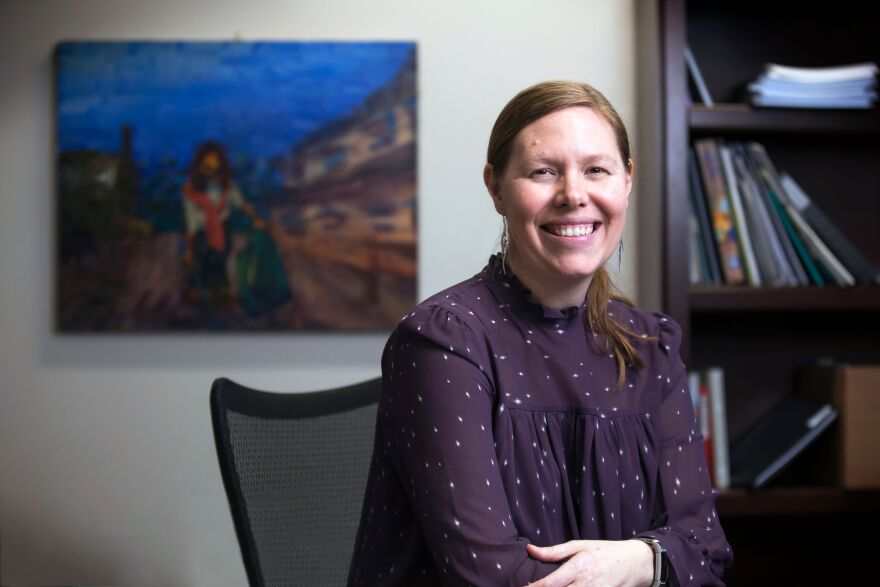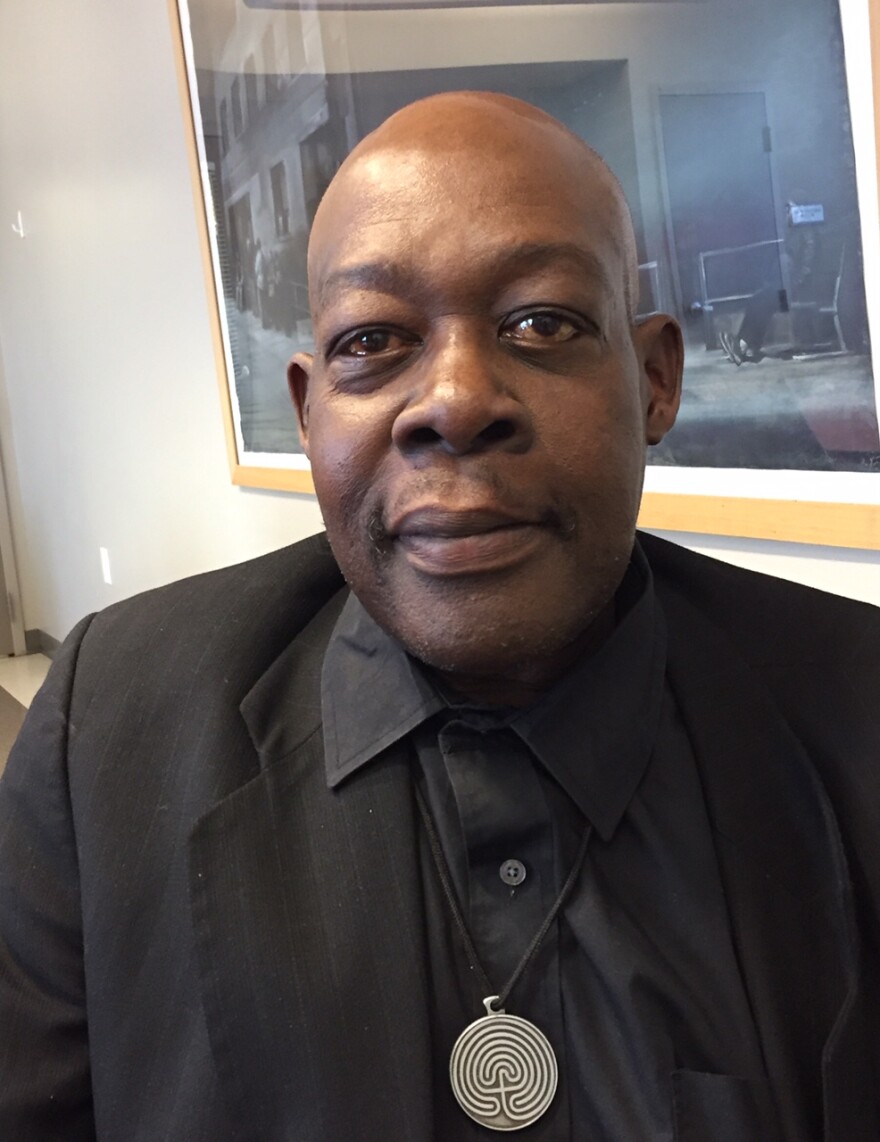Eight years ago, a dramatic symbol of Charlotte’s quest to fight homelessness opened. It was called Moore Place, an apartment building that provided homes for 85 people who had spent years on the street.
As a new decade dawns, plans are afoot to try it again in a new site. Looking back at the victories, setbacks and lingering challenges provides a hint at the future.

Veronica “Cookie” Mathis was one of the first Moore Place residents in 2012. She remembers it vividly.
"I was just a-cryin’ and a-dancin’ when I got my apartment," she recalls. She remembers putting her own key into her own door -- after living on the street, addicted to crack, in and out of jail, sleeping in empty cars and abandoned houses.
Now she had her own bedroom, kitchen and bathroom.
"Soon as they left I started shouting. Said, “Thank you GOD!," she said. "Thank you, thank you, thank you, thank you, THANK YOU! For giving me this place.”
Mathis was among the first 85 people who moved into Moore Place in February 2012. They’d all been identified as people whose disabilities and circumstances made it tough to find housing through other programs … and put them at high risk of dying on the streets.
She says having a safe place to sleep – and staff on hand to support her – helped her kick drugs and reunite with her family.
"I hurt my son," she says. "Real bad. And I had to win his love back and his trust and his friendship too. When he saw that I was doing right, he gave me a second chance, and God gave me a second chance too."
A Radical Idea
Liz Clasen-Kelly, CEO of Charlotte's Urban Ministry Center/Men's Shelter, has seen so many changed lives now that the Housing First philosophy seems obvious now: Don’t wait until people get sober or get job training or learn to budget their money before you offer them housing. Just get them off the streets.
"What started as 'Let’s keep people from dying,' when you spend time here you just see all sorts of aspects of really full living that’s happening," she says.

In the early 2000s that approach had taken root in cities such as Seattle and New York and Los Angeles, but it hadn't reached Charlotte. That changed when Denver Moore, a Texas man who spent years on the streets, spoke at an Urban Ministry fundraiser in 2007.
At that time, the Urban Ministry Center (which last year merged with the Men's Shelter) provided lunch and services to people who didn’t have homes, but watched many of them return to the streets each night. Moore challenged them to provide shelter.
Choosing Druid Hills
Today, Housing First Charlotte-Mecklenburg is a formal coalition that includes government bodies, banks, health-care providers, houses of worship and agencies serving the homeless. But in the beginning, Housing First was just Urban Ministry folks working to line up about a dozen apartments in the Druid Hills neighborhood, just north of uptown Charlotte.
Clasen-Kelly says the center thought they'd start small and spend lots of time studying the program, but "we had such a sense of urgency when we saw how successful it was that we needed to do more of it."
The center bought a two-acre junkyard on the edge of Druid Hills. It had industrial zoning, which allowed single-resident occupancy buildings, but had the neighborhood feel the founders wanted. The 85-unit building would be named Moore Place in honor of Denver Moore, who inspired it, and local donors John and Pat Moore, who helped make it a reality.

Many neighbors saw it as an unwanted intrusion. Darryl Reginald Gaston, a pastor who’s president of the Druid Hills Neighborhood Association, says he supported it because he saw the need.
"I think this is a beautiful property and I think the people who live here are good people," Gaston said recently. "And I think this is very valuable for the people who live here."
But today, he says, "my relationship with Moore Place is bitter and sweet."
A trip around the block that includes Moore Place illustrates both aspects.
There's a striking view of the uptown skyline, and tidy brick homes with young children playing outside. Druid Hills and the surrounding northside neighborhoods have been the site of many affordable housing projects, including some that are designed for working people with modest incomes. That, and the demand for close-in living, have brought new residents and higher property values to an area Gaston says had been in decline.
Suspicious Activity
Next to Moore Place, a huge communication tower rises, visible from anywhere in north Charlotte. Gaston says Moore Place tenants and other people used to gather there and trash the grounds. But he says Moore Place residents also worked with his group to clean the place up. Now it's enclosed within a tall wooden fence, with "No Trespassing" signs on the building.

On the back side of the building, the same fence blocks steps where people used to loiter.
"We were instrumental in making that happen," Gaston says. "But then the people who loiter here busted the wood paneling, went up in there and created their own little safe haven."
Inside the fence, he could see clothes, a lawn chair, a backpack -- and a man taking shelter.
Just down the street, Gaston approached a dirt area marked with litter and makeshift seating. A man sitting on a stump got into a car, which pulled up a few feet and idled.
"I’m not certain what that’s about, but I can imagine that’s probably a drug transaction," Gaston says.

When Gaston circled the block again, this time on foot, another car pulled up with the same man as a passenger. Gaston introduced himself. The man said he’s on the waiting list for Moore Place, and sometimes stays there with friends.
That's the kind of thing that Gaston says gives him pause.
"We want to have a community that’s crime free, drug free, disorder free -- despite the fact that we live in an urban setting," Gaston says.
Of course, drug deals, loitering and crime happen in many neighborhoods, and it’s hard to parse out how Moore Place affects the situation in Druid Hills. Earlier this month, three people were killed in the span of four days in Druid Hills, a striking spurt of violence.
Clasen-Kelly says Moore Place bans illegal drugs but allows drinking and overnight guests, just like any apartment building.
"Our tenants are very vulnerable people," she says, "and so we do have tenants struggling with addiction. I would argue that most people in most neighborhoods have neighbors struggling with addictions."
Each tenant pays 30% of their income in rent. For some, that’s zero when they arrive. But staff help them sign up for disability checks and any other benefits they qualify for.
Growth And Change
A few years after opening, Moore Place expanded from 85 to 120 apartments.
At the opening for the expansion in June of 2016, Urban Ministry leaders announced plans to build a new $12 million, 120-unit apartment building similar to Moore Place on Wilkinson Boulevard. But by the end of the year, that plan was dead -- shot down by opposition from west Charlotte neighbors.
Since then, Urban Ministry has focused on getting its most fragile people into what’s called "scattered-site housing" – individual apartments rented quietly from receptive landlords. Clasen-Kelly says that avoids the controversy and stigma that comes with a big site like Moore Place, and some tenants prefer it.

For instance, Reginald Shephard lived at Moore Place for a few years. He says it was much better than sleeping in a shed behind his church, but he eventually felt like new tenants weren’t respecting the shared living space. So he moved to a subsidized apartment on Beatties Ford Road.
There, he says, "I can grill out more. I can have a party in my yard if I wanted. I can sit out on my porch without a whole lot of other folks bothering me."
But there are trade-offs: Shephard says he’s been the victim of break-ins, and he’s had trouble reaching his caseworker.
Moore Place offers on-site caseworkers, nurses and a psychiatrist. There’s 24-hour security at the front desk, and activities ranging from cooking and yoga classes to volunteer work with schoolkids.
It’s not cheap – Clasen-Kelly says housing one person at Moore Place costs $15-16,000. That’s a mix of government money, private donations and tenant rent. But a studies have found that those costs are more than offset by the savings in emergency-room visits and jail – bills that are footed by taxpayers.
Todd "Tabby" Burns, another of the original Moore Place residents, says she has stayed because she appreciates the mix of safety and community.

Burns says she spent 15 years or more on the streets. She had been prescribed medication for bipolar disorder and anxiety, she says, but she says she often substituted alcohol and street drugs. And she said she was raped several times -- an experience Clasen-Kelly says is common for women living on the streets.
Burns says she'd gotten sober before moving to Moore Place, but she feared it wouldn't last without a stable home. "This was my last chance and final turn," she recalls.
Burns beams when she talks about taking yoga and cooking classes. She especially likes activities that involve working with children.
"One little girl, she wrote me a letter and said she wanted to be a strong lady like me so that she could help us not have nobody ever be homeless again," Burns says.
Looking Ahead
When Moore Place opened there was talk of having all chronically homeless people off the streets by 2016. That didn’t happen.
There’s constant turnover at Moore Place, with about 22 departures a year. Some people die or move into nursing homes. Some get kicked out for failing to pay rent or respecting the safety of fellow tenants. Some reunite with families and move on. One former Moore Place tenant now owns a Habitat for Humanity home, Clasen-Kelly says.
But more people keep arriving. Clasen-Kelly says Housing First Charlotte-Mecklenburg has housed almost 1,000 people over the past five years.
But the best estimate is that 457 remain on the streets and at risk.
"It is more complicated and will take longer than maybe we originally envisioned," she says, "but it remains a worthy goal to fight for."
So now the question is, what’s next?

Kathy Izard, a board member at the merged Urban Ministry/Men’s Shelter, says the group will announce plans this year to build something similar to Moore Place. Details, including the location, are still to come.
Izard says she believes the Moore Place experience will help residents of whatever community is chosen feel at ease. She says Druid Hills residents voiced fears that Moore Place would depress property values and discourage economic development. But property values have "doubled and even tripled" near the building. And she points to Camp North End, which is enticing artists, entertainment and entrepreneurs to a former industrial site a few blocks from Moore Place.
Izard says perhaps the biggest benefit is Moore Place helped people understand the need for providing homes for people in dire need, without demanding that they fix themselves first.
And, she says, it proved that this community is capable pulling off projects that seem impossible at first.



